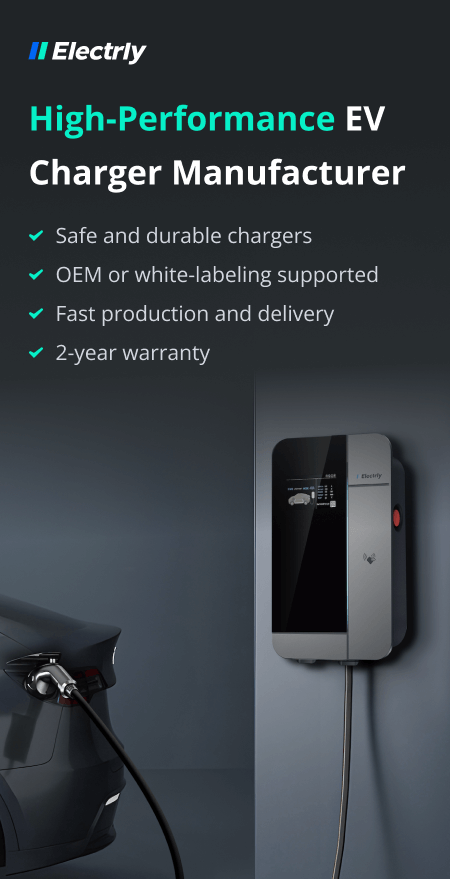Are you in a situation where you need to charge your Tesla, but you don't have access to a charging station? Maybe you're camping or experiencing a power outage due to a storm. In these situations, a generator can come in handy.
While it is true that charging a Tesla with a generator may run counter to the goal of reducing dependence on fossil fuels, it can be a practical solution to ensure you have enough power to complete your journey. In this article, Electrly will cover everything you need to know about charging your Tesla with a generator.
Standard Ways to Charge a Tesla
Before considering charging your Tesla with a generator, it's important to know the standard charging options available.
Level 1 charging uses the mobile connector that came with the car and uses a standard 120-volt outlet, providing a range of 3-5 miles per hour.
Level 2 charging can be done using a Tesla wall connector or a level 2 destination charging station that uses a 240-volt outlet and provides approximately 44 miles of charging per hour.
Level 3 Supercharging is available at select locations and can provide up to 200 miles of range in as little as 15 minutes, depending on the Tesla model.
These standard charging methods offer efficient and practical options for keeping your Tesla charged and ready to go.
How Does Tesla Charging Work?
Tesla charging works by using electricity to charge the battery in the vehicle.
Electric vehicle batteries require direct current (DC) to charge, while homes and charging stations typically provide alternating current (AC). The Tesla charging system utilizes an inverter to convert AC power to DC power for battery charging.
In situations where a generator is used to charge a Tesla, the process remains the same, as the generator produces AC power, which should be converted to DC power to charge the battery.
What to Consider Before Choosing a Generator for a Tesla
Before choosing a generator for charging your Tesla, there are several important factors to consider:
- Sine Wave: Tesla requires a clean sine wave, which limits the available options for inverter generators. Before choosing a generator, ensure that it provides an unmodified, clean sine wave.
- Grounding: To ensure proper grounding, most generators have a neutral bond to the frame, but inverter generators with a floating neutral may experience grounding issues. To fix this, consider converting to a bonded neutral or using a bonding plug, but use the latter option with caution.
- Portability: If you plan to charge your Tesla while camping or on the road, it's best to choose a portable generator. You should consider the weight and size of the generator, as well as its ease of transport.
- Output Power: You should also consider the voltage output of the generator, as a higher voltage will charge your Tesla faster. It's recommended to use generators with a minimum output of 2,500 to 4,000 watts for optimal performance.
Is Charging a Tesla with a Generator the Ideal Choice?
Charging a Tela with a generator is practical in an emergency, but it is not advisable to charge your Tesla with a generator on a regular basis. For example, use a generator to charge the Tesla at home only when the Tesla's battery is depleted and the power is out.
There are too many variables and things that can go wrong or not work, from improper grounding to gasoline or diesel fires. Even if everything works, you are still charging your Tesla in an inefficient manner.
Additionally, you are defeating the purpose of owning an electric car: to free yourself of reliance on fossil fuels.
Frequently Asked Questions
How long does it take to charge a Tesla with a generator?
If you have a 120V generator, the best you can generate is a trickle charge of three to five miles of range per hour charged. A generator that puts out 240V can achieve a maximum of 44 miles of range in an hour, but this requires that your generator puts out sufficient wattage, too.
Can you charge a Tesla with a battery charger?
No. A battery charger will not give you enough output to charge a Tesla.
Can I charge my Tesla with a generator while driving?
Charging the Tesla with the generator while driving is not possible. The charger port sensor automatically disengages the powertrain when the car is plugged in, and you can only put the car in gear when the charger cable is unplugged.
Is it safe to charge a Tesla with a generator?
Charging a Tesla with a generator is generally safe if the right generator is used and proper precautions are taken. The primary hazard is the risk of a fuel fire, so it is crucial to take necessary measures to prevent it. Additionally, operating a generator in an enclosed area like a garage can result in carbon monoxide poisoning, so ensure the space is well-ventilated.
If I purchase a generator, how do I know it will work when needed?
To ensure your generator will work when needed, test your generator and Tesla charging combination in a controlled environment to verify that it functions correctly. This way, if you need to charge your Tesla in an emergency or while camping, you will be familiar with the procedure.

